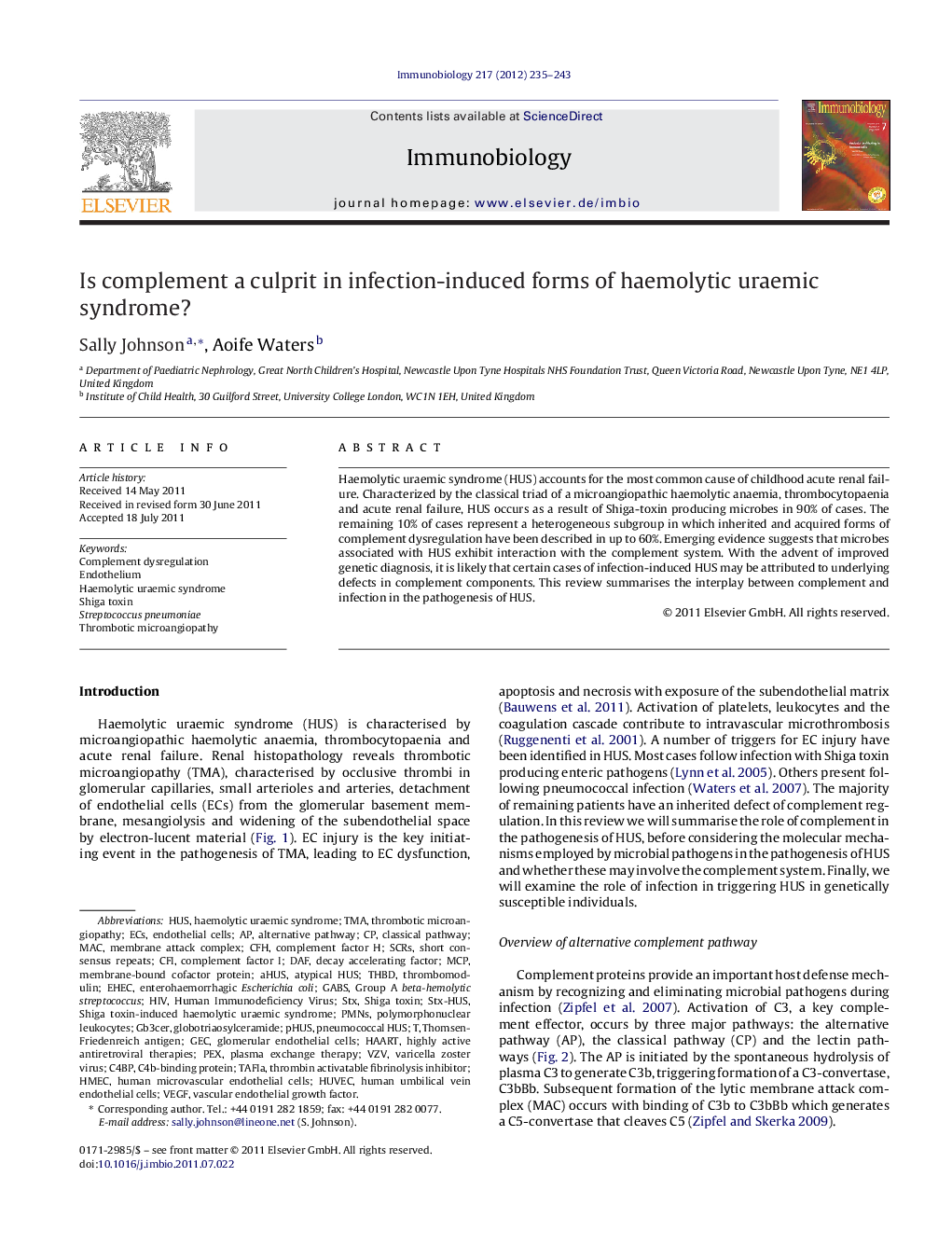| Article ID | Journal | Published Year | Pages | File Type |
|---|---|---|---|---|
| 10941098 | Immunobiology | 2012 | 9 Pages |
Abstract
Haemolytic uraemic syndrome (HUS) accounts for the most common cause of childhood acute renal failure. Characterized by the classical triad of a microangiopathic haemolytic anaemia, thrombocytopaenia and acute renal failure, HUS occurs as a result of Shiga-toxin producing microbes in 90% of cases. The remaining 10% of cases represent a heterogeneous subgroup in which inherited and acquired forms of complement dysregulation have been described in up to 60%. Emerging evidence suggests that microbes associated with HUS exhibit interaction with the complement system. With the advent of improved genetic diagnosis, it is likely that certain cases of infection-induced HUS may be attributed to underlying defects in complement components. This review summarises the interplay between complement and infection in the pathogenesis of HUS.
Keywords
THBDpHUSAtypical HUSGroup A beta-hemolytic streptococcusSTXThomsen-Friedenreich antigenTAFIaEnterohaemorrhagic Escherichia coliC4bpSCRsCFHGECVZVPMNsHAARTPEXCFITMAHMECMCPDAFGb3CerHUVECEHECaHUSECsStreptococcus pneumoniaeEndotheliumThrombomodulinshort consensus repeatsComplement dysregulationComplement factor HHUSHuman umbilical vein endothelial cellsEndothelial cellshuman microvascular endothelial cellsglomerular endothelial cellsShiga toxinHaemolytic Uraemic SyndromeComplement Factor IVascular endothelial growth factorVascular Endothelial Growth Factor (VEGF)polymorphonuclear leukocytesalternative pathwayclassical pathwayThrombin activatable fibrinolysis inhibitorMACthrombotic microangiopathyhuman immunodeficiency virusHIVVaricella zoster virusC4b-binding proteinmembrane attack complexDecay accelerating factorglobotriaosylceramide
Related Topics
Life Sciences
Biochemistry, Genetics and Molecular Biology
Cell Biology
Authors
Sally Johnson, Aoife Waters,
